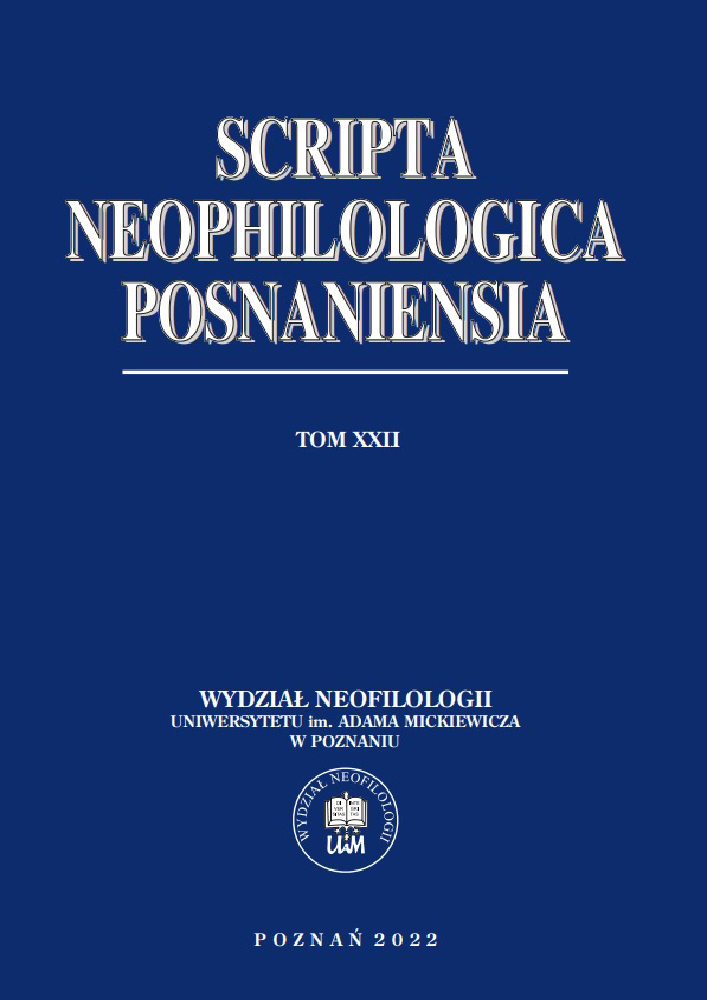Abstract
This article examines Tunisian pastoralists in light of the theory of communicative communities. The pastoral reality occurs as a stream of events that appear and disappear in the multi-dimensional pastoral reality. Each such dimension, or parameter thereof is a system of homogenous characteristics, reflecting essential aspects of the diverse pastoral experience. Tunisian pastoralism can be understood as the family comprised of all Tunisian pastoral communities. The contents of this article were ordered with a framework of two components – terminological and postulative. The first is devoted to a definition of terms which reveal the linguistic and cultural richness of the pastoral community, simultaneously providing insight into the conceptual content of the theoretical undertaking proposed here. The postulative component, on the other hand, takes up the relations between the objects denoted by the terms defined with the help of a system of postulates which reflect the propositional content of this work. Although the article, of necessity, treats only selected aspects of Tunisian pastoral reality, it does, however, present the linguistic and cultural specifics of the Tunisian pastoral community.
References
Al-Ǧazīrāwī, M. 2011. „It-Thīlīm min aḡānī ruʽāt al-ibil fi-ṣ-ṣaḥrā̕ at-tūnusiyya”. Aṯ-Ṯaqāfa Aš-Šaʽbiyya (Folk Culture), T. 12, s. 26-37.
Al-Ḫmīrī, A-ṭ-Ṭ. 1998. Qāmūs al-ʽādāt wa-t-taqālīd at-Tūnisiyya. Tūnis: Ad-Dār at-Tūnusiyya li-n-našr.
Al-Kaʽʽāk, ʽU. 1957. Al-ʽĀdāt wa-t-taqālid at-tūnusiyya. Tūnus: Ad-Dār at-Tūnusiyya li-n-Našr.
Al-Marzūqī, M. 1967. Al-ʼAdab aš-šaʽbī fī-Tūnus. Tūnus: Ad-Dār at-Tūnusiyya li-n-Našr.
Al-Marzūqī, M. 1984. Maʽa al-badw fī-ḥillihim wa-tirḥālihim. Tūnus/Lībyā: Ad-Dār al-ʽArabiyya li-l-Kitāb.
Al-Qalyūbī, H. 2015. „Simāt ʽimārat al-maskan at-taqlīdī fī-bilād al-ǧarīd at-tūnusī taṭabbuqan ʽalā namūḍaǧ sakanī min-madīnat Nafṭa”. Dirāsāt fī-Āṯār Al-Waṭan Al-ʽArabī 18, s. 1439-1472.
Aṣ-Ṣūyān, S. 2009. „Al-badāwa wa- l-bidā’iyya iʽādat naẓar fī-an-namūṯaǧ al-ẖaldūnī”. Al-Maǧalla Al-ʽArabiyya li-ʽIlm Al-Iǧtimāʽ V, s. 70-88.
Bańczerowski, J. 2012. „Metoda aksjomatyczna w językoznawstwie polskim”. W: Grochowski, M. 2012. Językoznawstwa w Polsce Kierunki badań i perspektywy rozwoju.Warszawa: Polska Akademia Nauk – Komitet Językoznawstwa, s. 11-45.
Bańczerowski, J. 2014. „Lingwistycze boje Ludwika Zabrockiego”. W: Grochowski, M and Z. Zanon. 2014. Znaki Pamięci. Spuścizna Jezykoznawców Polskich Drugiej Połowy XX Wieku.
Warszawa: Polska Akademia Nauk – Komitet Językoznawstwa; Uniwersytet Warszawski – Pracownia Pragmatyki i Semantyki Językoznawczej, s. 139-171.
Batóg, T. 1997. „W sprawie aksjomatycznej teorii systemów znakowych”. Investigationes Linguisticae II, s. 24-31.
Brāhmī, ʽA. Al-K, 2015. „Mā’idat al-fuqarā’ fī-bar Al-Hmāma ẖilāl an-niṣf al-awwal min-al-qarna al-ʽišrīn ǧadaliyyat al-ẖiṣb wa-al-ǧadb: Muqāraba untrūbūlūǧiyya”. Aṯ-Ṯaqāfa Aš-Šaʽbiyya (Folk Culture), T. 29, s. 76-93.
Brāhmī, ʽA. Al-K, 2016. „Tamaṯṯulāt al-ǧamal fī-aḡānī at-turāṯ aš-šaʽbī at-tūnusī”. Al-Maǧalla Al-ʽArabiyya li-d-Dirāsāt al-Anṯrūbūlūǧiyya al-Muʽāṣira II, Z. 2, s. 7-41.
Būkṯīr, M. 2012. „Al-Mā’ wa-ṭ-ṭawṭīn bi-l-qurā al-ǧabaliyya bi-l-ǧanūb at-tūnusī mulāḥaẓāt wa-iḍā’āt ḥawla qaryit As-Snad”. AAM 19, s. 31-69.
Louis, A. 1979. Nomades dʹhier et dʹaujourdhui dans le sud tunisien. Aix-en- Provence: EDISUD.
Moreau, P. 1950. „Le problème du nomadisme dans le Sud Tunisien” L’Afrique et l’Asie 11(n°3), s. 42-50.
Oppenheim, M. 1939-1968. Die Beduinen. Leipzig: Harrassowitz.
Oueslati, J. 2018. „The Valued Beauty of Ḡnā. A Genre of Tunisian Women’s Songs”. Rocznik Orientalistyczny LXXI, Z. 2, s. 162-186.
Oueslati, J. 2022. „Kalendarz rolniczy Ḡaylāna w tunezyjskiej kulturze ludowej – między mitem a rzeczywistością. próba analizy socjolingwistycznej”. Scripta Neophilologica Posnaniensia [w druku].
Ṣābir, M. Ad-D. i L. K. Mulaykit. 1966. Al-Badw wa-l-badāwa mafāhīm wa-manāhiǧ. Bayrūt: Manšūrāt al-Maktabat al-ʽAṣriyya.
Sarel-Sternberg, B. 1963. „Semi-Nomades du Nefzaoua (les problems, les modes dʹexistence, les perspectives dʹévolution”. Nomades et Nomadisme au sahara, s. 123-135.
Valensi, L. 1977. Fellahs Tunisiens: l’économie rurale et la vie des campagnes aux 18e et 19e siecles. Paris: De Gruyter Mouton. https://doi.org/10.1515/9783110810974 DOI: https://doi.org/10.1515/9783110810974
Zabrocki, L. 1963. Wspólnoty komunikatywne w genezie i rozwoju języka niemieckiego, t. I, Prehistoria języka niemieckiego. Wrocław: Ossolineum.
Zabrocki, L. 1972. „Z teorii socjolingwistyki”. Biuletyn Polskiego Towarzystwa Językoznawczego XXX, s. 17.25.
Zabrocki, L. 1980. U podstaw struktury i rozwoju języka (At the Foundation of Language Structure and Development). J. Bańczerowski (red.). Przedmowa Władyslaw Kuraszkiwicz i Jerzy Bańczerowski. Warszawa / Poznań: Państwowe Wydawnictwo Naukowe.
License

This work is licensed under a Creative Commons Attribution-NoDerivatives 4.0 International License.

